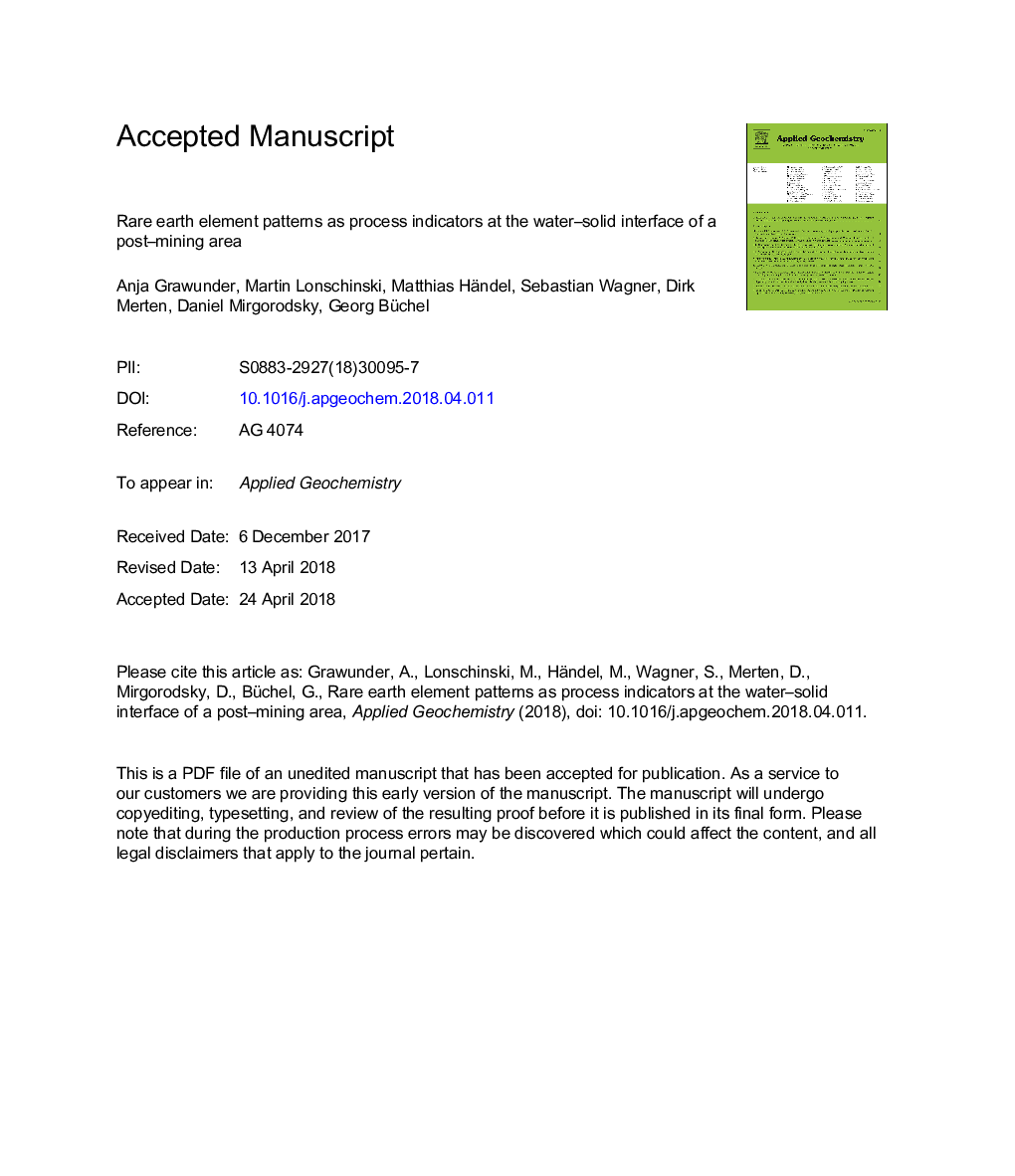| Article ID | Journal | Published Year | Pages | File Type |
|---|---|---|---|---|
| 8863036 | Applied Geochemistry | 2018 | 53 Pages |
Abstract
Efflorescent salts at Gessenhalde indicated capillary rise because they reflected the major groundwater characteristics in the REE patterns. Moreover, especially in the downstream area, Mn oxide coatings occurred in the zone of capillary rise above the groundwater table. These Mn phases (birnessite and todorokite) preferentially accumulated Ce over other REE. Positive Ce anomalies in groundwater indicate at least partial dissolution of these Mn phases. Ferric phases like schwertmannite and goethite were found to slightly enrich light REE. However, based on this dataset, it was possible to relate specific features of the REE patterns to the input pattern of the heap and local geology as well as the formation/dissolution of secondary phases.
Related Topics
Physical Sciences and Engineering
Earth and Planetary Sciences
Geochemistry and Petrology
Authors
Anja Grawunder, Martin Lonschinski, Matthias Händel, Sebastian Wagner, Dirk Merten, Daniel Mirgorodsky, Georg Büchel,
